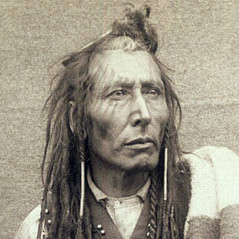I wasn’t aware of how long this watering down of the news to increase ad profitability has been in progress:
The evolution of journalism in the twentieth century was away from hard news aimed at citizens and toward what media critic Ben Bagdikian called “fluff” aimed at consumers and designed to attract ads. Bagdikian found that hard news made up about four pages of the average daily newspaper in 1940, and that while editions had more than doubled in size forty years later, most of the increase consisted of fluff since the amount of hard news had grown to only about five pages. “Most fluff is wanted by advertisers to create a buying mood,” noted Bagdikian, who added that surveys showed readers wanted more hard news. “An article on genuine social suffering might interrupt the ‘buying mood’ on which most ads for luxuries depend.” Fluff matched perfectly Marshall McLuhan’s description of media content as “the juicy piece of meat carried by the burglar to distract the watchdog of the mind.”
Hard news came to be avoided by newspapers because not only did it not attract ads—it repelled them. Newspapers arguably crossed the Rubicon in the 1930s, when they suppressed news of studies that linked cigarette smoking to cancer because tobacco companies were among their biggest advertisers. That opened the door for other advertisers to demand the removal of news that might hurt their business. Air Canada, noted Bagdikian, warned newspapers in 1978 that “its ads would be canceled as long as any news story of an Air Canada crash or hijacking ran in the paper and if its ads were carried within two pages of a news story of any crash or hijacking on any airline.” This new advertiser sensitivity to news perhaps triggered a move toward even more ad-friendly content, and newspapers weren’t shy about promoting it to ad buyers.
This is the same logic that keeps coal on life support.
Classic capitalist whitewashing … billionaires broke our world … we should ask billionaires to save us.
Tons of gems in this lengthy piece
Suffice it to say that the journalism we need to save in order to preserve democracy is not fluff or advertorials but, instead, what Alex S. Jones (not the infamous talk show host) called in his 2009 book Losing the News the “iron core” of reporting on politics, government, business, the economy, the environment, and other things that citizens need to know about.
Then there’s the more than $15 billion a year that our telecom companies are raking in from internet service provision at profit margins approaching 50 percent.
As Bill Birnbauer noted in his 2019 book The Rise of Nonprofit Investigative Journalism in the United States, “investigative stories costing thousands of dollars can deliver millions of dollars of benefits to society through policy changes and social returns.”
The 2021 book News Hole crunched mountains of data to find a causal relationship between reduced coverage of local politics and lowered levels of civic engagement in the US. While two-thirds of registered voters in Los Angeles regularly turned out to vote in local elections during the 1980s, only 18 to 23 percent have voted more recently, in a trend seen across the country and highlighted by the dismal 6 percent turnout in Dallas in 2015. Civic knowledge has also plunged: while 70 percent of American voters could name their city’s mayor in 1966, that was down to less than 40 percent in 2016.
News media are different from other industries, however, as they are considered so vital to political discourse and community life in Canada that they enjoy a Charter guarantee of freedom from government interference. Media owners, who increasingly included private equity firms and US hedge funds, soon learned that they could monetize this guarantee by framing it as their right to a continuous stream of government handouts.
Instead, we should implement new mechanisms for funding public goods like news such as quadratic finance. Quadratic finance is a non-market mechanism that enables a decentralized ecosystem of self-organizing public goods producers such as newsrooms. It overcomes the collective action problem of donation-based models by considering the number of people contributing as well as the amount of money contributed. Newsrooms with a large base of popular support receive greater funding
Newsrooms with a large base of popular support receive greater funding
“Popular” newsroom receiving greater funding is the problem with the current approaches.
Currently popular newsrooms have more viewers, which means more eyeballs on advertising, which generates more ad revenue. It creates an incentive to use fear mongering (because fear keeps people watching the news) and biased news (because most people want to hear news that reinforces their beliefs and they turn off news that challenges them.)
I don’t know what the solution is, but somehow we need to get to a solution where funding favours unbiased factual reporting regardless of popularity.
Popular, here, isn’t meant in an ad and attention grabbing sense.
With quadratic funding, people make voluntary contributions to newsrooms they like. The government matches these contributions using a neutral formula that results in newsrooms that receive small contributions from many people receiving a greater level of funding than those supported by small number of wealthy people. The fear mongering and bias can be avoided by allowing citizens to make negative contributions





